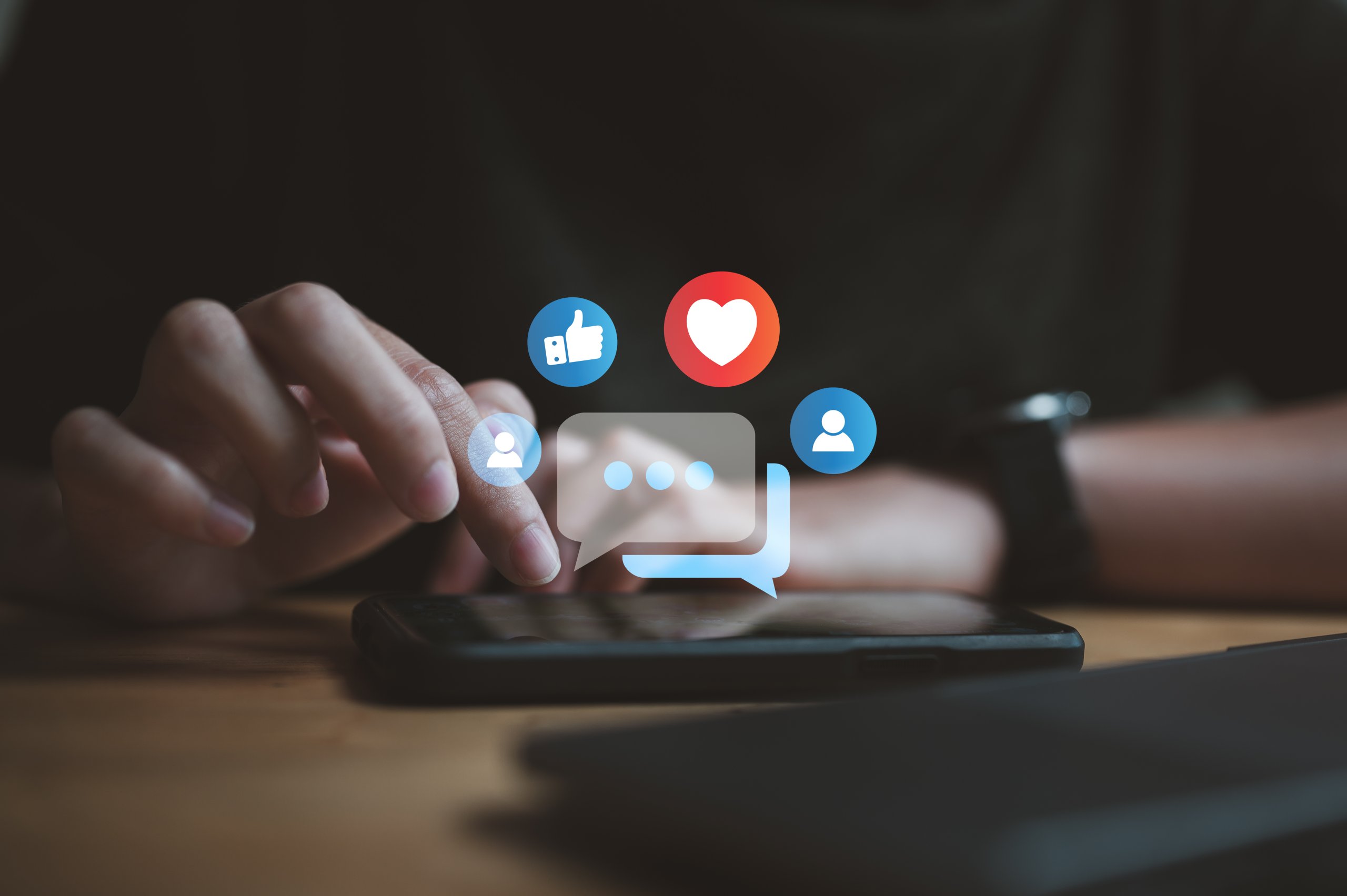
Social media has become an inseparable part of our daily lives, offering convenience, connection, and community. But the same platforms we use to share personal milestones, connect with friends, and network professionally are also rich hunting grounds for cybercriminals.
Hackers don’t need to breach complex firewalls to learn about you. They often just need a few clicks through your online profile. From piecing together personal details to launching targeted scams, the information you share online can be used against you.
How Hackers Exploit Social Media
- Phishing and Spear Phishing
Hackers study your posts and connections to craft highly personalized messages. For example, if you announce a new job on LinkedIn, you might receive a fake email appearing to come from HR with “onboarding documents.” These tailored attacks, known as spear phishing, are far more convincing because they use your own information. - Credential Guessing
Many people use birthdates, pets’ names, or favorite sports teams in their passwords. Hackers comb through Facebook, Instagram, or X posts to collect these personal details and attempt password cracking or password reset questions. - Business Email Compromise (BEC)
Criminals use LinkedIn to identify executives or finance team members, then impersonate them in fraudulent payment requests. In 2024, the FBI reported $16.6 billion in losses from BEC scams, many of which were fueled by details pulled directly from social media. - Malware Distribution
Hackers use fake accounts to spread malicious links disguised as news articles, contests, or even job postings. Clicking one could install spyware or ransomware on your device. - Impersonation and Identity Theft
Criminals can clone your profile, copy your photos, and message your contacts to scam them. This not only damages your reputation but also spreads trust-based fraud through your network.
Real-World Examples
- CEO Fraud Cases: Several high-profile CEO fraud cases illustrate the devastating impact of social engineering attacks. Austrian aerospace firm FACC lost €42 million, German supplier Leoni AG was tricked into transferring $44 million, and Europol dismantled a Franco-Israeli gang that stole €38 million in just days. More recently, attackers even used deepfake audio to impersonate a CEO’s voice, showing how evolving technology makes these scams increasingly convincing and costly.
- Cambridge Analytica Scandal: Cambridge Analytica exposed how seemingly harmless social media data could be weaponized at scale for political manipulation, triggering one of the largest privacy scandals of the digital age and reshaping global discussions about data rights and regulation. While not a traditional hack, this case showed how seemingly harmless data like likes, shares, and friend networks can be weaponized for manipulation.
- 2020 Twitter Hack: Attackers compromised 130 high-profile Twitter accounts, including Elon Musk, Bill Gates, and Barack Obama, by exploiting information about employees shared online, which they used in social engineering schemes. This was a wake-up call showing how social media platforms can be compromised through human manipulation, and how such incidents can ripple across politics, business, and compliance landscapes.
How to Protect Yourself
- Lock Down Privacy Settings
- Why it matters: Hackers use public posts, friend lists, and contact info to craft convincing spear-phishing attempts.
- What to do:
- On Facebook, limit posts to “Friends Only.”
- On LinkedIn, restrict visibility of connections.
- On Instagram and X, consider making your profile private.
- Compliance consideration: GDPR and HIPAA emphasize minimization of data exposure. Oversharing personal or work-related data can inadvertently expose regulated information.
- Think Before You Share
- Why it matters: Birthday posts, travel plans, or “fun quizzes” (like “Which city should you live in?”) often reveal answers to password reset questions.
- What to do:
- Avoid posting exact dates (birthdays, anniversaries, business travel schedules).
- Be cautious with company updates that might aid attackers (e.g., “our CFO is on vacation” can fuel CEO fraud).
- Compliance consideration: Oversharing about company projects or clients may violate confidentiality agreements or regulatory safeguards under GLBA, HIPAA, or FERPA.
- Use Strong, Unique Passwords
- Why it matters: Hackers frequently guess or brute-force weak passwords using data found on your profiles.
- What to do:
- Create long, complex passwords (at least 16+ characters).
- Never reuse passwords across social media and work accounts.
- Use a password manager to store them securely.
- Compliance consideration: Frameworks like PCI DSS and NIST 800-63 mandate robust password policies.
- Enable Multi-Factor Authentication (MFA)
- Why it matters: Even if your password is stolen, MFA requires a second proof of identity (like a code, security key, or biometric).
- What to do:
- Use authenticator apps (Microsoft Authenticator, Google Authenticator, Authy) instead of SMS when possible.
- Enable MFA on every social media, email, and financial account.
- Compliance consideration: MFA is explicitly required under CMMC, PCI DSS, HIPAA Security Rule, and recommended by NIST.
- Verify Before Clicking or Responding
- Why it matters: Many scams spread through social media DMs or fake accounts impersonating friends, colleagues, or executives.
- What to do:
- Hover over links before clicking.
- If a message seems suspicious, confirm through another channel (call, in-person, or separate email).
- Compliance consideration: Failure to verify could lead to unauthorized disclosure of regulated data, triggering GDPR breach notifications or HIPAA penalties.
- Regularly Monitor for Impersonation
- Why it matters: Attackers clone real profiles to trick your contacts into scams or to damage your reputation.
- What to do:
- Search for duplicate accounts under your name and report them immediately.
- Set up Google Alerts for your name or brand.
- Compliance consideration: Impersonation of staff in regulated industries (like healthcare or finance) can escalate to identity theft or fraudulent access attempts, leading to compliance violations.
- Participate in Ongoing Security Awareness Training
- Why it matters: Employees are often the first line of defense. Most BEC and social engineering attacks succeed due to a lack of awareness.
- What to do:
- Organizations should include social media risks in annual cybersecurity training.
- Use simulated phishing campaigns to teach staff how to spot red flags.
- Compliance consideration: Awareness training is a required control under GLBA, PCI DSS, HIPAA, and GDPR.
- Separate Work and Personal Accounts
- Why it matters: Blending personal and professional accounts increases the attack surface. If your personal account is hacked, attackers may pivot to your employer.
- What to do:
- Use different emails for personal, professional, and financial accounts.
- Avoid linking personal social media with business accounts where possible.
- Compliance consideration: Keeping work and personal accounts separate supports least privilege principles and helps prevent cross-contamination of regulated data.
Together, these steps combine individual digital hygiene with compliance best practices, helping protect not only you, but also your organization from reputational and regulatory damage.
Social media is a powerful tool for connection, but it’s also a treasure trove of data for hackers. By being mindful of what you share, adjusting your privacy settings, and staying alert to suspicious messages, you can enjoy the benefits of social media without handing criminals the keys to your digital life. In the age of oversharing, caution is one of the strongest forms of defense.


Social Engineering Defense: Strategies to Protect You and Your Organization